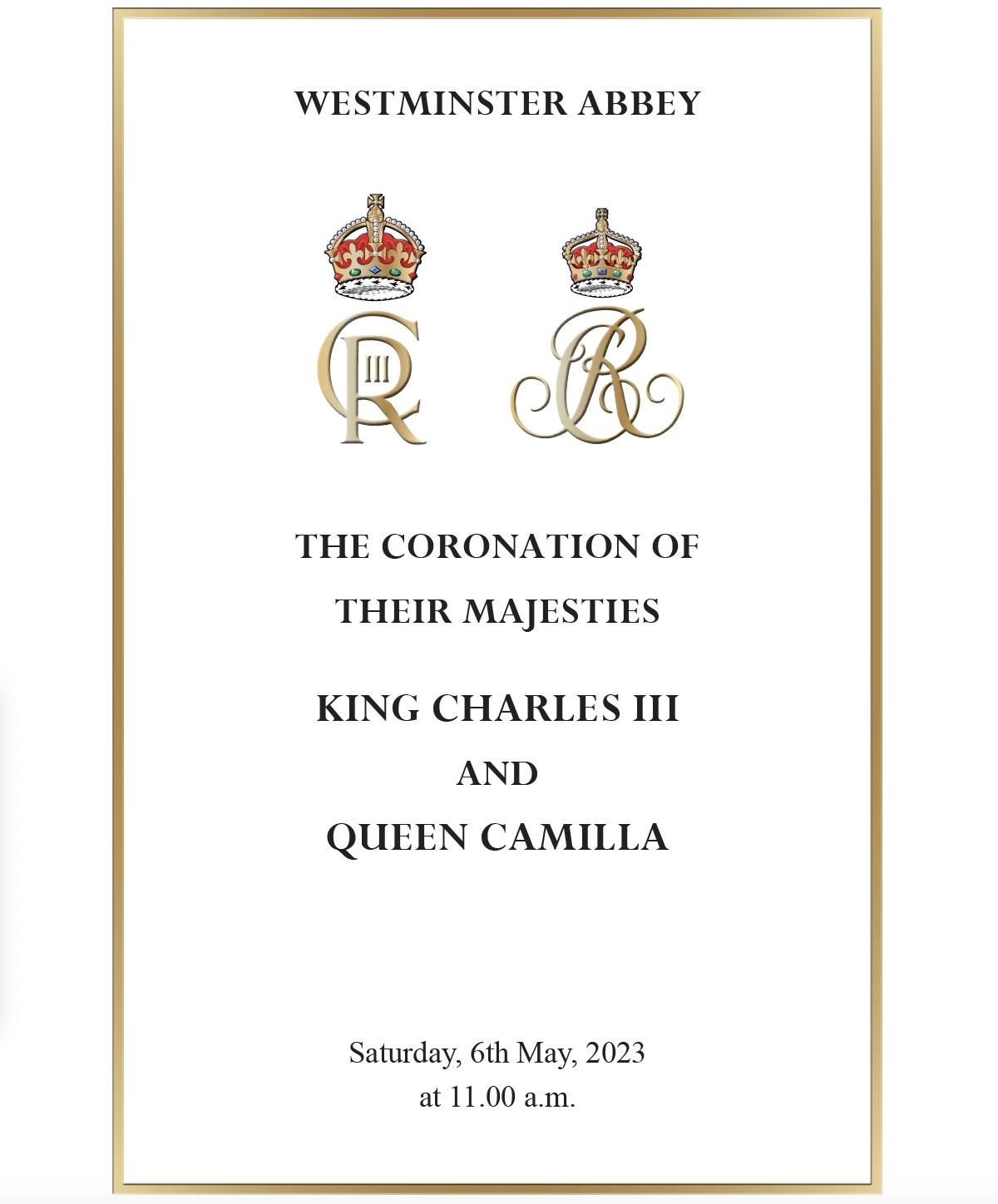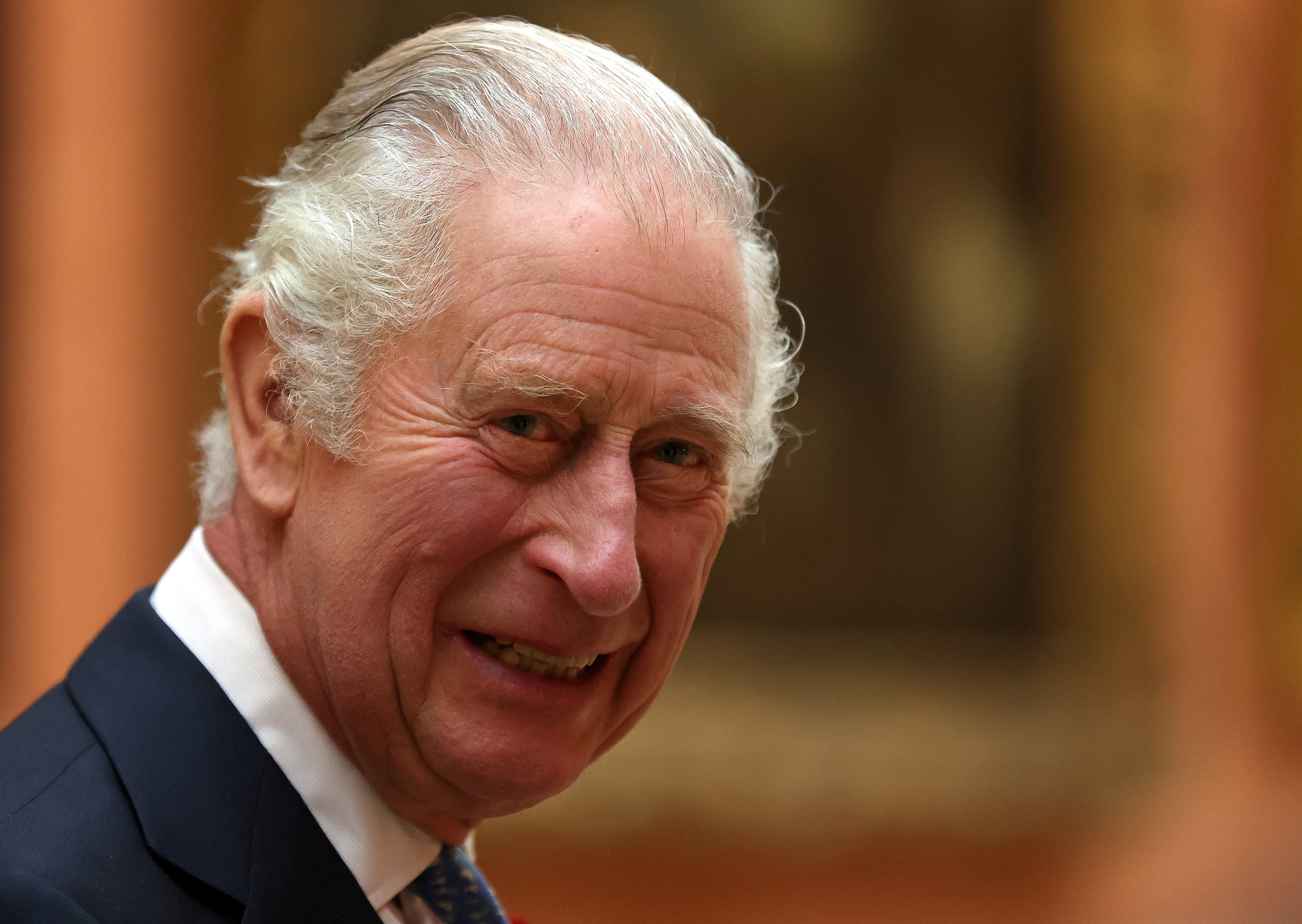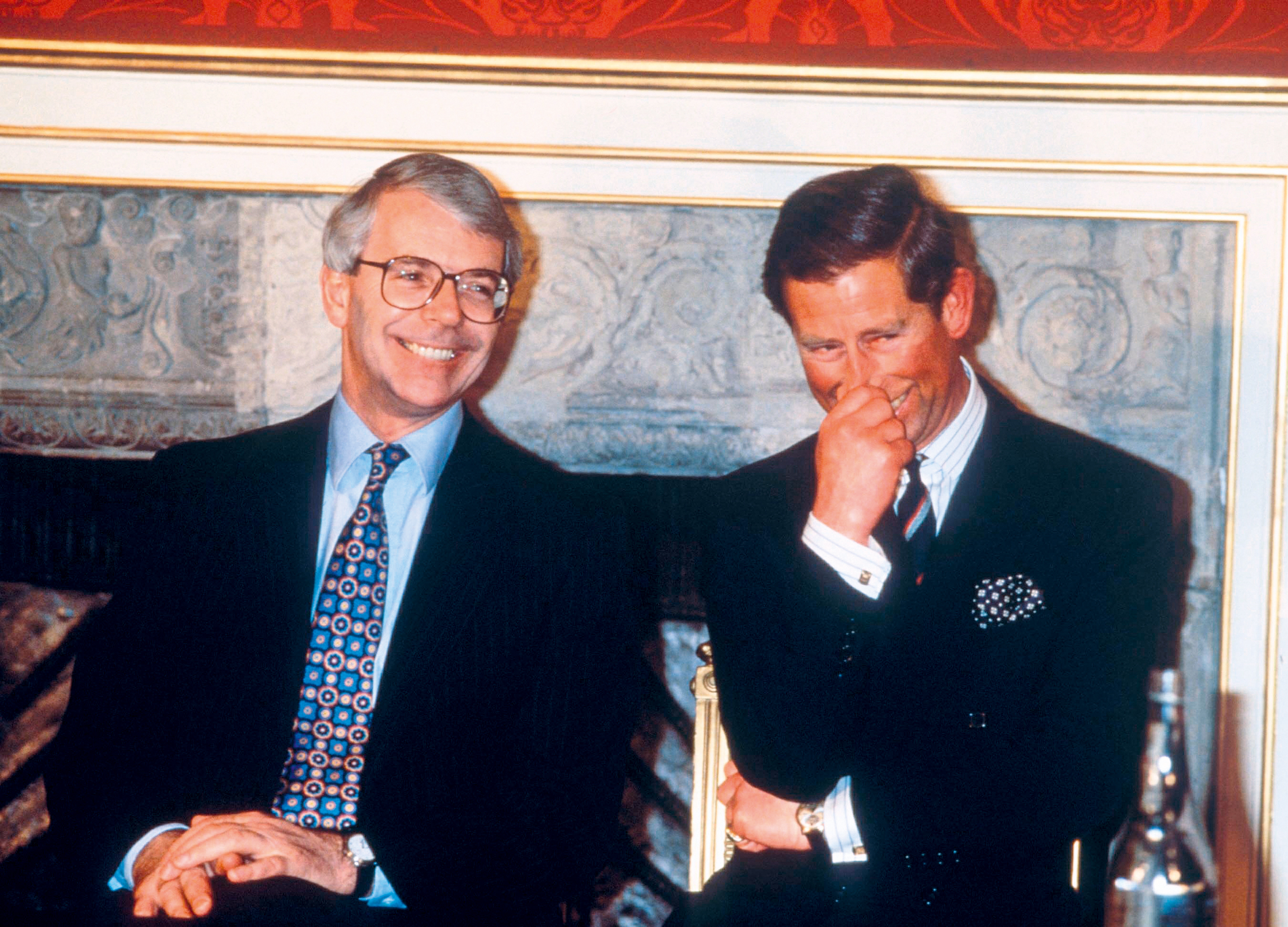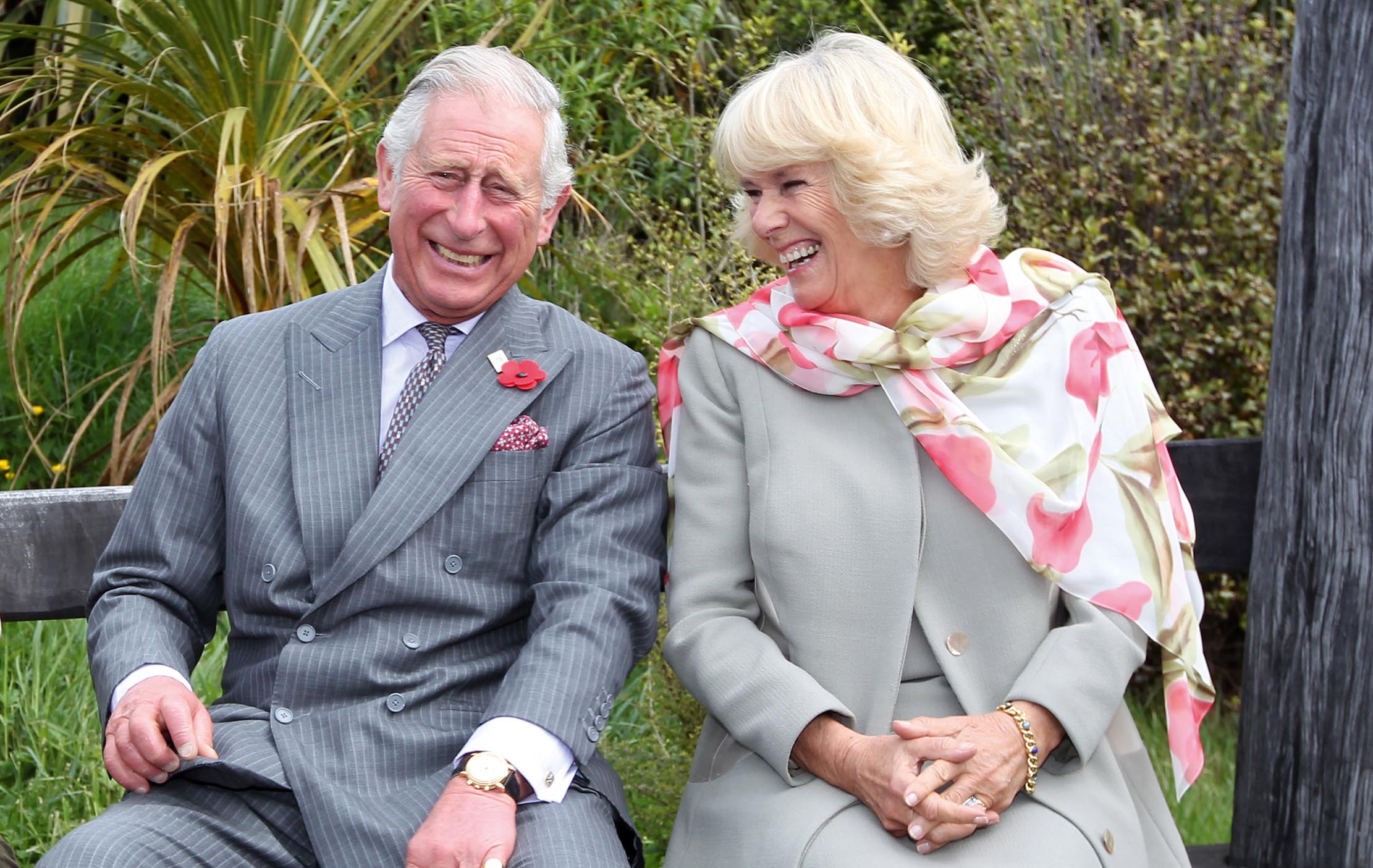The Timetable for the Coronation of King Charles III, including the order of service and The Oath
Eleanor Doughty takes a look at what's happening over coronation weekend — and explains the changes in the roles of dukes and duchesses, hitherto so important in the ceremony.

The coronation weekend timetable
Saturday, May 6
- 10.20am The King’s Procession. The King and Queen will leave Buckingham Palace via the Central Gate, riding in the Diamond Jubilee State Coach
- 11am The Coronation Service will begin promptly at Westminster Abbey.
You can download the complete, 50-page order of service for the coronation of King Charles III from the Royal Family's website (PDF link).

- Gun salutes will ring out across the country at the moment of crowning
- 1pm The Coronation Procession. The King and Queen will return to Buckingham Palace in the Gold State Coach, escorted by some 4,000 members of the Armed Forces
- 1.45pm The King and Queen will receive the Royal Salute
- 2.15pm Members of the Royal Family will gather on the balcony of Buckingham Palace for the Coronation Flypast. There will be big screens set up in Hyde Park, Green Park and St James’s Park
Sunday, May 7
- Communities are invited to enjoy Coronation Big Lunches, in a nationwide act of celebration and friendship
- The official recipes to crown the table are Ken Hom’s lamb with an Asian-style marinade, Nadiya Hussain’s yoghurt-topped aubergine, Gregg Wallace’s prawn tacos with pineapple salsa, Adam Handling’s strawberry and ginger trifle and His Majesty’s signature Coronation Quiche (www.royal.uk/the-coronation-quiche)
- 7pm The Coronation Concert will be staged and broadcast live at Windsor Castle by the BBC
Monday, May 8
Aiming to create a lasting legacy from the Coronation Weekend, The Big Help Out aims to inspire a national day of volunteering. By encouraging people to join the work being undertaken to support their local areas, the campaign will highlight the positive work of volunteering across the nation (www.thebighelpout.org.uk)
How the coronation of King Charles has changed the role of dukes and duchesses — quite probably forever
Charles III’s coronation marks a break with tradition. For the first time, dukes and duchesses will have no role. Historically, however, wherever there was a sword to carry, an orb to bear or a sceptre to hold, the highest-ranking peers in the realm were at hand to do the job; many are now celebrating this heritage by holding special coronation exhibitions.
Between 1702 and 1953, the Dukes of Richmond bore the 3ft-long Sceptre with the Dove — a gold rod representing the sovereign’s spiritual role — at seven coronations (out of a possible 12). Each of them carried the same sceptre — supplied in 1661 by royal goldsmith Roger Viner — in a rare feat of continuity.
The family’s historic role is the focus of this year’s exhibition at Goodwood, the Richmonds’ West Sussex seat. It includes a number of items rediscovered in January, such as the 9th Duchess’s coronation robes and two-yard train, as well as two page-boy uniforms from 1937 and 1953, right down to the silk tights they wore. Clementine de la Poer Beresford, curator of the Goodwood Collection, wants people to ‘get a feel for what it was like to be at a coronation — not that many people get to go to a coronation, but I want to make it accessible’. The current Duke, Miss de la Poer Beresford adds, ‘loves his history, and is so proud of his heritage — we have the coronets out on display all the time’.
Article continues below

Ducal coronation exhibitions
- ‘The Dukes of Richmond and the Coronation’, Goodwood House, West Sussex, May 7–October 30, on all open days www.goodwood.com
- ‘Crowns and Coronets, Coronations and the Percy family through time’, Alnwick Castle, Northumberland, until October 29 www.alnwickcastle.com
- Display of the 1st Duke of Wellington’s coronation robes, Apsley House, London W1, until September 30 www.english-heritage.org.uk
- ‘Royal Connections, Crowns and Coronets’, Blenheim Palace, Oxfordshire, until July 30 www.blenheimpalace.com
- Exhibition of robes and the Howards set of replica crown jewels, Castle Howard, North Yorkshire, until July 23 www.castlehoward.co.uk
- ‘Crown and Country: Grimsthorpe and Coronations’, Grimsthorpe Castle, Lincolnshire, until July 19 www.grimsthorpe.co.uk
- ‘Glimpses of Coronations Past’, Raby Castle, Co Durham, until September 30 www.raby.co.uk
Unlike the Sceptre with Dove, the blunt-ended Sword of Mercy has moved from duke to duke: Newcastle, Devonshire, Grafton, Beaufort, and, most recently, Northumberland. At the latter Duke’s Alnwick Castle is ‘Crowns and Coronets’. When I visit, the exhibition is beginning to take shape in the state rooms and the coronet belonging to Charles Seymour, 6th Duke of Somerset — who, in 1682, married Lady Elizabeth Percy — is centre stage in the Upper Guard Chamber. Opposite, below four Canalettos and a van Dyck, is a case containing diaries by Elizabeth, Baroness Percy, who, in 1740, married Sir Hugh Smithson, created Earl of Northumberland in 1750 and Duke in 1766. The cabinet holds two royal commands to the coronation, one of the Earl of Northumberland and the other addressed to Baroness Percy. Christopher Hunwick, the Duke of Northumberland's archivist, reveals that Elizabeth wrote in her diary: ‘I had tickets both as Countess of Northumberland and Baroness Percy.’
More recently, in 1937, Helen, Duchess of Northumberland (née Gordon-Lennox), widow of the 8th Duke, was appointed Mistress of the Robes to Queen Elizabeth. Her exquisite robes, which cost 190 guineas, embroidered with the Richmond rose, the Gordon ivy leaf and the Percy lion, are on display in the drawing room. It strikes me that one needed to have a fair bit of ready money to accept such a role, but 1937, says Clare Baxter, the Duke’s collections manager, ‘wasn’t a particularly good time for the family — her husband had died in 1930 and her brother-in-law in 1918’.
Exquisite houses, the beauty of Nature, and how to get the most from your life, straight to your inbox.
Still, as the MP Sir Henry 'Chips' Channon described, ‘none rivalled the dignity and magnificence’ of Helen Northumberland. ‘More than once during the service, she and her train-bearer, her little boy Geoffrey, usurped the interest of the spectators. She walked with such majesty and splendour that the Duchess of Devonshire, even Lady Airlie and Queen Mary were eclipsed.’ Helen Northumberland was, after all, confident in her position: not only was she the daughter, sister, and wife of a duke, but, by 1953, two of her sons had become dukes (after the death of her eldest son in 1940) and both her daughters had married dukes.
In his kitchen, Ralph Percy, 12th Duke of Northumberland, is reflective. ‘We have had a mixed history with the crown of England over the past 1,000 years,’ he notes. ‘The pendulum can swing very quickly — when Mary Tudor came to the throne, the Percys came back to power and, when Elizabeth came to the throne, they were in deep despair again.’ Asked whether dukes should still be involved in events such as these, he laughs. ‘That’s a tricky one. It goes back to tradition and heritage and whether dukes are still relevant in this day and age any more than a castle such as this is, but we go on looking after it because it’s part of our history. It would be good if one or two dukes are represented, as part of the history of our country.’
One duke will be at The King’s coronation, but not in his capacity as a peer: Richard Scott, 10th Duke of Buccleuch, will be there ‘by virtue of being High Steward of Westminster’.

Credit: Country Life
The coronation of King Charles III: What you'll find inside Country Life's 350-page commemorative issue
Country Life 26 April 2023 commemorates the coronation of King Charles III with an extraordinary issue of over 350 pages

What sort of man is King Charles III, and what sort of king will he be?
A brilliant conversationalist, a cracking host and, surprisingly, an excellent actor, Charles III genuinely cares for people and strives to

Sir John Major on King Charles III: 'The King was so far ahead of received wisdom that he had to wait for it to catch up'
Ahead of the curve, diligent and gifted with an empathy that allows him to connect with all people, Charles III

Camilla, the Queen Consort: The 'best listener in the world' and the King's secret weapon
Whether she’s highlighting domestic abuse, championing literacy, dining with pensioners or quietly supporting her husband, our new Queen is excelling

All the King's gardens, by Alan Titchmarsh
Alan Titchmarsh considers the new monarch’s extraordinary contribution to British gardening, which is always underpinned by organic methods and a